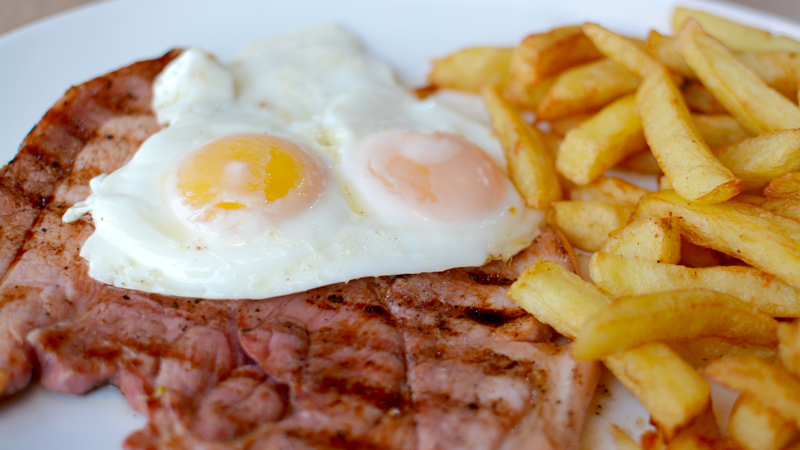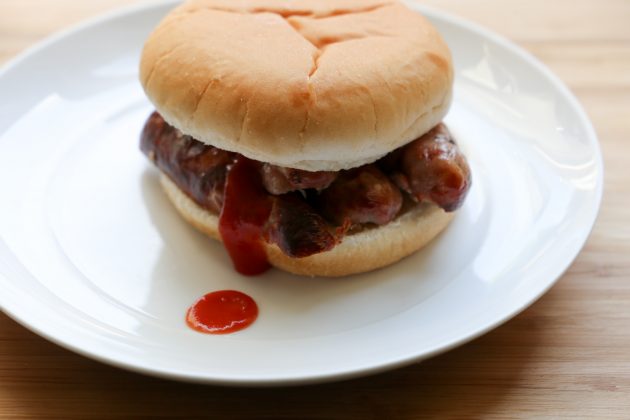Best And Worst Things On A Golf Club Menu
Nutritionally speaking, what are the best meals to order before or after a round of golf?

Nutritionally speaking, what are the best meals to order before or after a round of golf?
Best And Worst Things On A Golf Club Menu
We have all been there, 18th hole complete, full round with your friends done and now time to count the card.
You walk with your bag from the 18th to the entrance of the clubhouse, place your bag upright, glove back in the pocket and wallet out ready for the post-round meal.
Having spoken to many of my friends who play, I am not the only one who thinks about what they are going to order from the menu.
In the few minutes from entering the clubhouse and taking a seat, you are already beginning to think about what to eat and drink.
Do you go for the classic beer and a burger, the club sandwich or time to try something else?
Subscribe to the Golf Monthly newsletter to stay up to date with all the latest tour news, equipment news, reviews, head-to-heads and buyer’s guides from our team of experienced experts.
Related: The best and worst things to eat at the halfway hut
Hopefully if you are reading this, you are a golfer who takes an interest in your nutrition before, during, but importantly after a round too.
This becomes particularly important if you are playing in a competition and have to play again tomorrow morning.
With this in mind, let’s take a look at some of the best and worst things on a golf club menu...
Best And Worst Things On A Golf Club Menu - Best options:
Club Sandwich

Oh yes, the classic club sandwich – found almost anywhere in Europe!
A good club sandwich will have the option or white or brown bread.
I personally would go for the brown option to ensure a slower release of carbohydrates, rather than white bread.
A chicken breast or sliced chicken is a fundamental part of a good club sandwich, a quality source of protein to help muscles recover.
Lettuce and tomatoes also make an appearance to give you a few vitamins and minerals.
Most places should also include bacon.
If you can, ask for the fat to be cut off the bacon or do it when you get the sandwich. Again, another source of protein.
To keep this healthy, ask for the sauce not to be added and instead add in some salt and pepper yourself once you have it at the table.
The salt will help with replacing any salt loss during the round.
Chicken Wings
Can turn messy, but what you will get here is a very high intake of protein, normally as a side dish.
Again, this will help with muscle repair and recovery.
Glass of milk
If you have read my other articles on golfmonthly.com, then you will begin to see milk makes an appearance most of the time.
A great source of protein, carbohydrates and also calcium.
Remember also that milk is a brilliant re-hydrator and has been shown to be as good as some oral rehydration solutions that are on the market.
Also, milk contains both whey and casein protein.
Casein is the protein that is slowly released into the muscles, so if you have a round again tomorrow this should be a non-negotiable to support recovery as you sleep!
Bonus points for having another glass of milk 30 minute prior to bed!
Steak, new potatoes and a side of greens
Not all clubhouses will have this option, but if your local does then again, a massive serving of protein included with a steak.
The reason I have gone for new potatoes instead of chips is to eliminate the fatty oils that chips are cooked in.
Boiled potatoes will be a much better option for carbohydrates to get the glycogen back into the muscles.
Half-naked chicken burger
If you are feeling a little naughty, then try a chicken burger but with only one half of the bun, again ask for sauce on the side so you can add this to the quantity you want.
Advice here is to ensure you ask for half the bun when you order, otherwise when it arrives as a full burger, the temptation to just eat all of it will be there, whereas if only half the bun leaves the kitchen, the craving is taken away and out of your control!
A last-minute entry here is a chicken and beef fajita mix.
Normally a good serving of meat with roasted veggies allows you to create a tasteful dish and one you can regulate your serving of carbohydrates by how many wraps you make.
The mix of chicken and beef will also provide a great source of protein for you.
Related: 10 best supplement and sports nutrition products for golfers
Best And Worst Things On A Golf Club Menu - Worst Options:
Sausage baguette/bap

I’m happy to be proven wrong on this one, but the majority of sausage meat at golf clubs will likely be poor quality.
Unless this is a high-quality sausage with a high percentage of meat, it is not going to do you any favours with supporting muscle repair and recovery after a round.
Additionally, the majority of clubhouses will only stock white baguettes and not have any brown baguettes.
Ham egg and chips
Although the eggs are class in this dish, similar to the sausages, the ham quality and clubhouses can be questioned.
In my few years playing as an amateur golfer, I have seen a few of these meals served up and been amazed as what I have seen.
Although you could argue the chips are a source of carbohydrates (which they are) normally these are deep fat fried.
Again, not what we want to support recovery.
Pie and mash
Although I do enjoy a pie and mash, they are normally very calorie dense and high in fat.
Similar to the above, I have tasted some dreadful pies the last few years and have decided to stay away from them now.
Apart from the odd chunk of meat, they don’t really pack any other goodness in the post-round meal.
My choices:
It goes without saying that the first thing to put into the body should be a pint of water.
Tick that box first to ensure you rehydrate and then enjoy your post-round meal.
Once the clubs are open again, my go to will be the following:
Pint of water Half-naked chicken burger with side of greens and boiled potatoes Glass of milk
Related: The best and worst things to eat and drink whilst playing golf